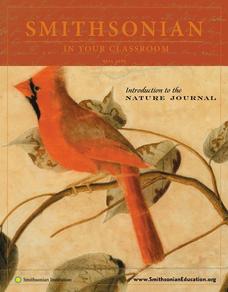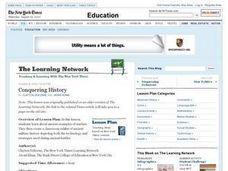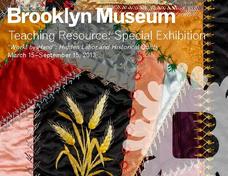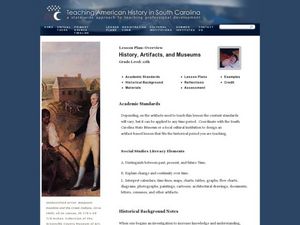Curated OER
National Museum of Natural History
Students explore U.S. history by participating in a class field trip. In this museum instructional activity, students attend a field trip to the Natural History Museum and identify cultural stories and art pieces they enjoy. Students...
Curated OER
The Stuff of Stories: Using Museums to Inspire Student Writing
Middle schoolers write descriptions, narratives, and dialogues based on objects of art and time periods in a museum. They base several writing assignments on art objects and paintings, including a literal description and an emotional...
Curated OER
Archaeology 101
Let's go on an archaeological dig! Here is a lesson plan that allows your young scientists to do just that! You fill up an empty water table or tray with sand, and bury miscellaneous objects. Pupils use spoons, sifters, and brushes to...
Curated OER
The Effect of Natural Selection on Genes, Traits and Individuals
Rotating through five stations, evolutionary biologists explore the question of how changes in DNA facilitate the changes in a population over time. High-quality, colorful cards of animals, skeletons, skulls, and DNA sequences can all be...
Curated OER
Social Studies Wonders: An Exploration
Help middle schoolers conduct Internet research and develop a working definition for the discipline of social studies. From a list of websites, they develop classification skills and differentiate between primary and secondary sources....
Curated OER
Landscape Confection: Pre-visit Activity
Upper graders explore the concepts of landscape art, man, nature and their inter-relationship. This is a critical thinking and analysis activity intended to prepare the class for an up coming trip to a local art museum. They analyze,...
Curated OER
The Museum Idea
Students evaluate and record the various types of museum careers. In this The Museum Idea instructional activity, students create a bicentennial time capsule, design a Museum of me, and make a classroom mini museum. In addition students...
Curated OER
Nature in a Flick of the Eye
Students explore the visual information a diorama artist provides by thinking of all the details for the background of a location described by their teacher. They investigate diorama artists and their importance in creating the illusion...
Curated OER
From Curiosity Cabinet to Museum Collection
Learners study binomial nomenclature and museum-based research. They create a curiosity box, label the objects in their curiosity box , develop a classification scheme for the objects, and create a database of all objects collected by...
Curated OER
Biomimicry, Nature: Architecture of the Future
Students explore the relationship between nature and architecture. In this cross curriculum history, culture, and architecture lesson, students observe and discuss structures visible in nature. Students view websites in which Native...
Curated OER
Introduction to the Nature Journal
Young scholars create nature journals. In this introduction to the nature journal lesson, students discover the uses of nature journals and begin their own. Young scholars are challenged to use vivid, concise terms in their descriptive...
Curated OER
Understanding Cladistics
Students explore cladistics and create a cladogram of their own. They are shown how the scientist at the American Museum of Natural History use a method called cladistics to group animals. Students are asked how the animals (lion,...
Curated OER
What is a Museum? The Musee' d'Orsay
Students read paragraphs and study pictures to learn about museums and in particular the Musee' d'Orsay. In this museum study activity, students study the range of activities found in a museum and the characteristics common to all...
Curated OER
Nature, Red in Tooth and Claw
Young scholars explore the science and art of taxidermy, and research various biomes that could be depicted in museum displays. They synthesize their knowledge by creating dioramas that depict the diverse life forms typical of these biomes.
California Academy of Science
Poetic Reflections
Poetry is a wonderful way to explore language, express topical understanding, and incite creative thinking. After a trip to the local natural history museum (or zoo), learners write an acrostic or a cinquain poem describing one of their...
Curated OER
Conquering History
Students explore examples of ancient warfare and discuss the various uses of ancient military technologies. Students investigate the origins of biological and chemical weapons and create a classroom exhibit depicting technology and...
Curated OER
Solving Mummy Mystery Helps History Come Alive
Students uncover more mysteries of Ancient life. They see how artifacts can reveal much about a complex culture's history and beliefs. They study the long line of ancient Egypt's pharaohs.
Brooklyn Museum
"Workt by Hand": Hidden Labor and Historical Quilts
Just like a painting or the symbols on a flag, quilts can express ideas that reflect a cultural context, space, and time. The class discusses the history of quilt making throughout US history and what different types of quilts mean. They...
Curated OER
The Museum Idea
Students discover the nature and uses of museums by completing several creative projects. Students also analyze abstract art with teacher guidance.
Curated OER
Lesson 6: Natural Resources
Students create a travel poster about a favorite place in Florida. In this Florida activity, students research their favorite place and use desktop publishing to create a poster. They also make a brochure using Microsoft Publisher.
Curated OER
History, Artifacts, and Museums
Eleventh graders interpret historical evidence presented in primary and secondary resources. In this historical artifacts lesson, 11th graders select and research historical topics that require them to interpret calendars, timelines,...
Curated OER
"The Science Times"
Students create their own newspaper after gathering information at the Museum of Natural History's Hall of Biodiversity.
Curated OER
Animal Life Histories Derived From Morphology
Students learn the mechanisms of natural selection by deducing information from the physical appearance of the animal.
Indian Land Tenure Foundation
Native Foods and Livelihoods
Introduce young scholars to the ways in which land and people have a relationship. They examine the types of food local tribes have traditionally consumed and ways in which the people and the land both benefited from the act of...

























